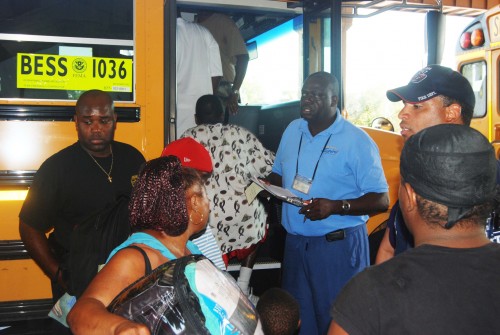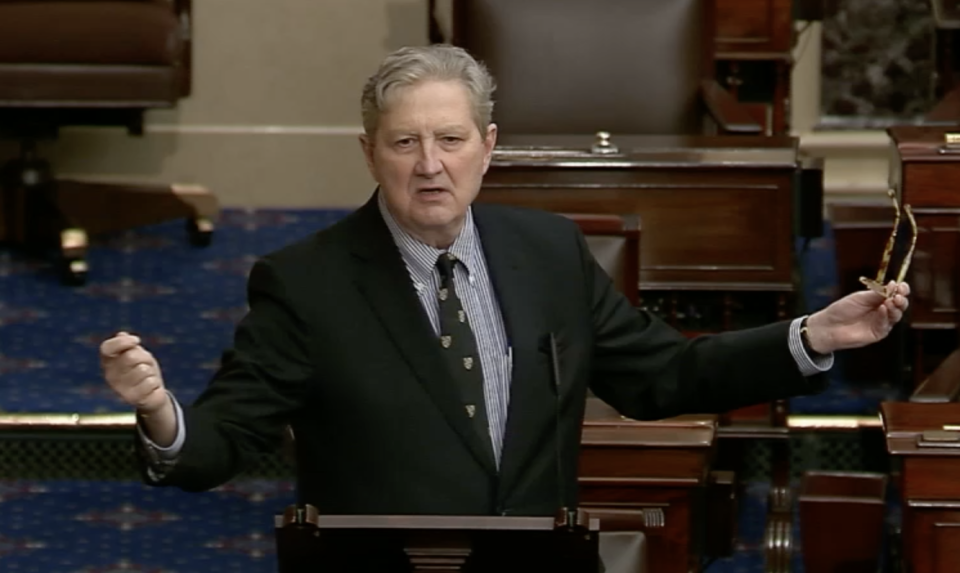Agnes Sutherland Naquin
September 30, 2008October 2
October 2, 2008Last month, Hurricane Gustav locally forced the first real test of new state evacuation plans, outlined in the Louisiana Citizen Awareness and Disaster Evacuation Guide, implemented since the 2005 hurricane season.
How well the evacuation of the Tri-parishes and other coastal Louisiana parishes went depends on whom one asks.
The Governor’s Office of Homeland Security and Emergency Preparedness (GOHSEP) considered it a success for moving nearly 2 million Louisianans out of Gustav’s and Ike’s path.
“Governor Jindal stepped out early and made sure people were aware that these hurricanes posed a threat and made people aware there would be a possible evacuation and ultimately there was,” said Veronica Mosgrove, spokesperson for GOHSEP.
For the heads of Terrebonne Parish’s Unified Command, Parish President Michel Claudet and Sheriff Vernon Bourgeois, results were mixed.
They were relieved that at least 90 percent of parish residents evacuated, but the system design for those without transportation needs to be improved, they agreed.
“There were delays because of certain things coming in late,” Claudet said. “We had some problems concerning the location of shelters and they had a lot of problems as far as getting the people into the shelters.”
“The system that is used for people who do not have transportation needs to be done in a different and better way,” Bourgeois said. “We don’t control it; the state does that. But we’re already working with the state to improve that anyway.”
An informal survey of the evacuees found that most would not heed the call if ordered to leave again.
Those who left on the state-provided buses were supposed to take a six-hour ride to a shelter in Shreveport. However, many endured an 18- to 22-hour journey that landed them as close as Monroe or as far away as northeast Alabama.
“We were taken to Alexandria at first,” said Alex Scott, an evacuee who ended up at Northeast Alabama Community College in Raynesville with his wife, Erin, and two daughters, Anya, 4, and Ariana, 23 months. “But the shelter there was full, so we moved on. The ride was hot and uncomfortable until we changed buses in Mississippi. People were angry and irritated.”
For those who left on their own, frustration stemmed from not being allowed back into the parish for almost a week after Gustav had passed.
“You can’t protect your property if you leave because they (law enforcement) won’t let you back in,” said Chauvin resident Ricky Trahan.
The mandatory evacuation of Terrebonne Parish got off to a rocky start from the outset.
On Aug. 30, parish residents who needed transportation to escape the approaching Categoty 3 Gustav waited outside the Houma-Terrebonne Civic Center. Initially predicted to take three to four hours, the evacuation of 2,500 people instead took nearly a full day.
While the state provided 25 buses in addition to the 100 the parish already had, it did not provide drivers to bring the evacuees to shelters in Shreveport and Alexandria.
About 500 residents spent the night on the cold civic center floor until 79 Louisiana National Guardsmen arrived early the next morning to drive the buses.
State officials contend the plan was executed very well.
“They were evacuated with very little gridlock,” Musgrove said. “Unlike in years past when they had mandatory evacuations, we had contraflow. So we consider it very successful.”
Bourgeois countered that better communication is needed between the state and parish to avoid problems getting people into shelters.
“They (state) knew ahead of time the road from Houma to Shreveport (partly on U.S. 90 West) was already blocked, inundated with traffic,” he said. “It would take 18 to 22 hours to get there. When they knew our route from Houma to Monroe would be a shorter, easier and safer route, then that bus was routed to Monroe. That means the families that thought that bus was going to Shreveport went somewhere else. That caused some confusion.”
“They also had some problems locating the people,” Claudet said. “But I think it went as smooth as it could have given the number of people we evacuated.”
Nearly a week later, over 200 mostly elderly evacuees were unexpectedly removed from shelters in Alabama and transported back to Houma, where there was low water pressure, no power and no way to get back to their homes.
Parish officials and the Red Cross rushed to set up Dumas Auditorium and Houma Jr. High as temporary housing.
“I heard from my husband’s sisters there’s no power, no utilities, no nothing,” said Gray resident Rosalind Nelson, who was evacuated to North West Shores Community College in Muscle Shoals, Ala. “So I’m thinking to myself, ‘Why are they bringing us back here?’ The people in Alabama didn’t want us to leave because they knew the situation down here.”
At the time, Bourgeois blamed the situation on a “glitch with the state,” while Unified Command Public Information Officer Bill Dodd said it was “renegade bus drivers” who brought the evacuees without authorization.
There are still hundreds of evacuees sheltered at Dumas Auditorium, Schreiver and Gibson gymnasiums, but Bourgeois said the situation is manageable.
“That wasn’t really a problem. You got to get some of them back,” he said. “You can’t have all 90,000 people coming back at the same time. That would be a disaster also.”
State police Public Information Officer Lt. Doug Cain said an after-action report would be written in about a month in conjunction with other agencies to see what issues need to be addressed and ways to make evacuations more efficient.
“This is the first time we utilized both the southeast plan and the southwest plan at the same time,” he said. “There’s always room for improvement, but I don’t want the public to have the expectation that they’ll be moving on contraflow interstates at 70 miles per hour. It’s just impossible.”
Tere will always be a next big hurricane coming toward south Louisiana. While many residents claimed they might reconsider following an evacuation order, Bourgeois hopes the impact of Ike has illustrated the importance of not hesitating.
“They probably did realize that no matter what, even when government thinks we’re not going to have water, there’s a pretty good chance we will,” he said. “I’m positive when asked, people will still leave.”
Approximately 2,500 Terrebonne Parish residents used state transportation to evacuate the area prior to Hurricane Gustav making landfall. State and parish officials say the program is under review to determine its success. * Photo by KEYON K. JEFF










